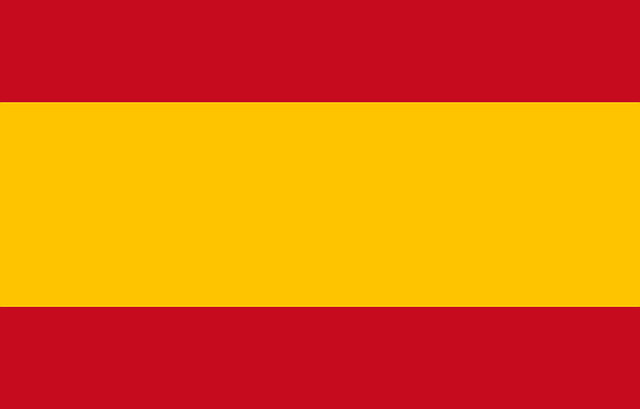Huesca
 Context
Context
The region of Aragon, of which Huesca is one of the three provinces, faces a significant problem of depopulation and is the area of Europe with the highest number of abandoned villages; more than 200. In addition, the migration rate of the Province of Huesca is between -6 and 0. Moreover, the province has a gross rate of total population change lower than -6 per every 1000 inhabitants.
Huesca still has not reached the level of both foreign and national visitors that other Spanish regions have reached and could become an alternative tourist destination for other more saturated regions in Spain. Nonetheless, in peak Summer months it does already suffers from over-tourism at particular cultural monuments.
 Cultural tourism products, motivations and existing gap
Cultural tourism products, motivations and existing gap
Rural tourism occupancy in Aragon is 40% lower than in neighbouring regions. Huesca contains areas of outstanding natural beauty (Pyrenees), cultural monument beauty (castles, roman and Arab ruins, medieval towns), has a strong wine and gastronomy tourism potential (four relatively unknown wine denominations of excellent quality, an emerging olive oil industry, cheese, meats and restaurants/cuisine). Huesca Province is an ideal case study for SmarCulTour, owing to its long experience in leading rural tourism initiatives and its high value tangible and non-tangible cultural tourism heritage and inventory (large number of UNESCO monuments, high-value cultural assets in terms of folklore, crafts, gastronomy, ecotourism, etc.). In addition, the territory is strategically located in the Pyrenees, includes an important route of the Camino de Santiago, has several world famous national nature parks of outstanding beauty, is in close proximity to and has a strong cross-border cooperation with France and has a very diverse tourism offering, such as rural adventure activity routes in and around the Pyrenees.
In terms of tourism, Huesca suffers from limited development of the rich offering of cultural and nature observation tourism, low tourist occupancy rates, concentration of tourist offer in certain localities and the disconnection between the different tourist resources, products and destinations.
 Cultural tourism strategies
Cultural tourism strategies
The Aragon tourism plan aims (in line with the Spanish plan) to improve the quality of both natural and cultural surroundings, reduce the impact on environmental, cultural and social conditions of the main destinations and stimulate tourism activity, taking into account international commitments concerning adaptation and mitigation measures on climate change.
 Lab goals
Lab goals
Huesca aspires to be a world class destination and has all the tourist infrastructure available, including both cultural and natural beauty sites. Outside of Spain, Huesca is almost an unexplored paradise of cultural heritage. There is definitely room for growth in terms of numbers of tourists, but it is a growth which would need to be carefully managed to preserve the integrity of both natural and cultural sites. Ironically, Huesca experiences saturation during the peak Summer months and this would also be one of the challenges, where it would need help in sustainably managing such increasingly large flows.
In addition to depopulation other socio-economic and environmental challenges include the abandonment of farming as an economic activity, the impact of climate change, environmental sustainability of the natural environment and the degradation of natural resources through human activity
 Activities and innovations being developed
Activities and innovations being developed
The long-term goal is to sustainably integrate traditional cultural tourism offering with other forms of tourism (adventure, gastronomy, routes (Camino) etc.). Furthermore, Huesca is to be promoted – nationally and internationally – as an alternative regional and rural destination to a section of the cultural tourists heading for more saturated regions such as Madrid and Barcelona. Finally, the ambition is to develop a sustainable year-round cultural and rural tourism flow, as the regions suffers from high seasonality in Summer (and Winter from skiing). There are several monuments of very high cultural value such as San Juan de la Peña, Loarre, Alquézar, etc. which may become victims of their own success in the future, as numbers start to rise. There is a need to manage cultural assets and protect them from over-tourism, particularly during Summer months.
Within the SmartCulTour Living Lab, the direct intervention to be tested will be the co-creation of a cultural tourism strategy for the Huesca region. Secondly, the lab aims to improve stakeholder networking based on the already existing Huesca La Magia.
 Stakeholders
Stakeholders
The Provincial Authority of Huesca leads many of the tourism initiatives in its province. They are very supportive of the Lab and have offered assistance in mobilizing the necessary stakeholders to make this a success. In the Lab a wide range of social and economic actors are be included, among which the tourism industry (e g hospitality, leisure and events), local authorities and policy makers, town/rural planners, an international cross border organization, the Chamber of Commerce, transport authorities, research centres, the agrifood sector, and environmental non-governmental organizations.



